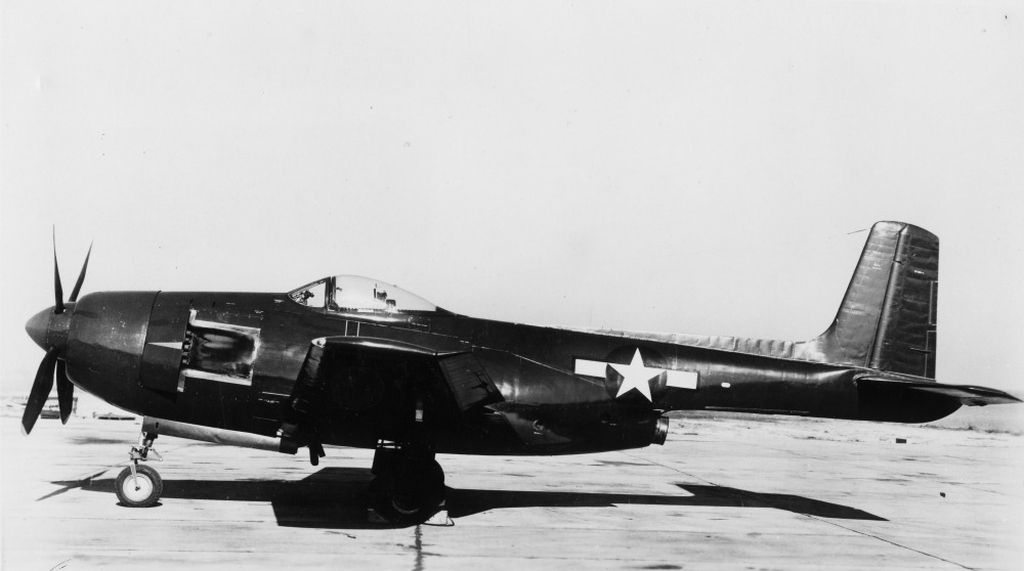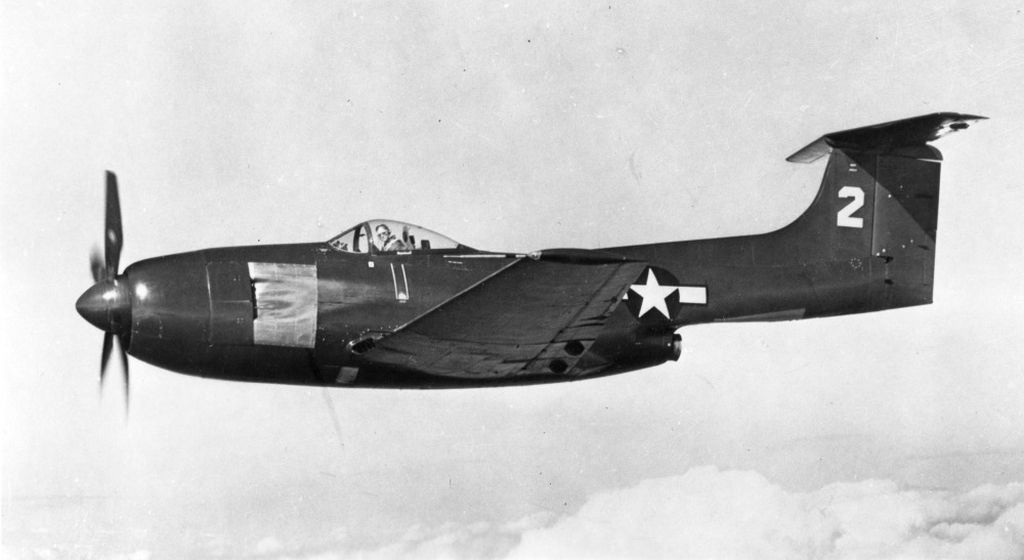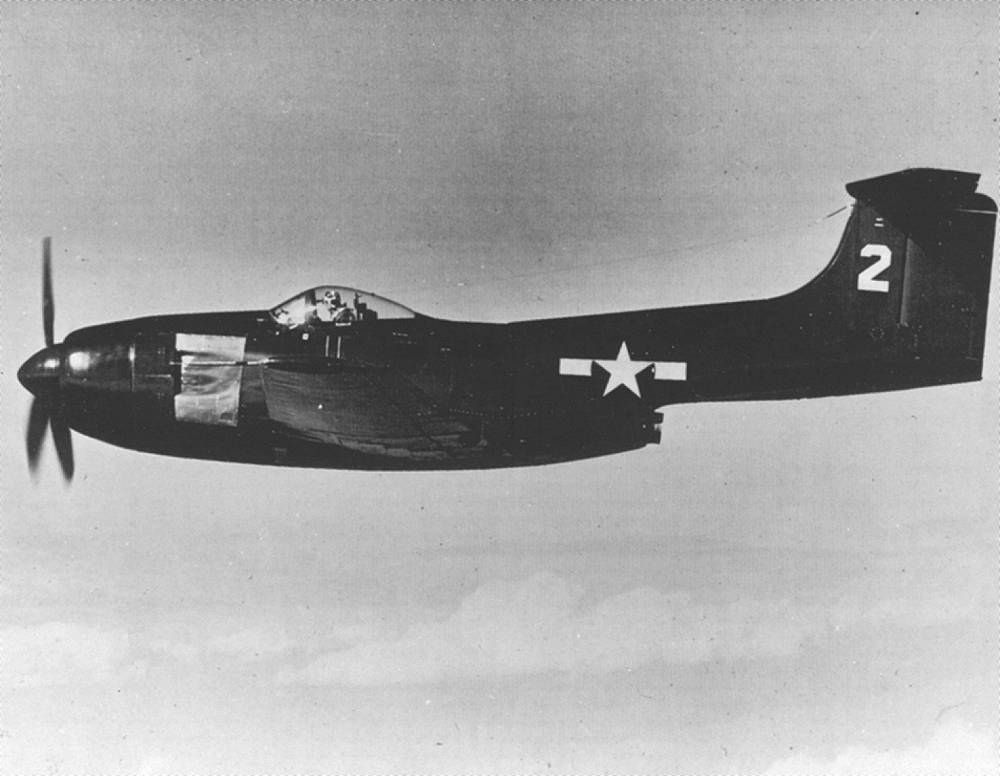Forums
- Forums
- Duggy's Reference Hangar
- USAAF / USN Library
- Curtiss XF15C
Curtiss XF15C
Post a reply
- Go to Previous topic
- Go to Next topic
- Go to Welcome
- Go to Introduce Yourself
- Go to General Discussion
- Go to Screenshots, Images and Videos
- Go to Off topic
- Go to Works in Progress
- Go to Skinning Tips / Tutorials
- Go to Skin Requests
- Go to IJAAF Library
- Go to Luftwaffe Library
- Go to RAF Library
- Go to USAAF / USN Library
- Go to Misc Library
- Go to The Ops Room
- Go to Made in Germany
- Go to Campaigns and Missions
- Go to Works in Progress
- Go to Juri's Air-Raid Shelter
- Go to Campaigns and Missions
- Go to Works in Progress
- Go to Skinpacks
- Go to External Projects Discussion
- Go to Books & Resources
-
9 years agoThu Dec 17 2015, 02:00am
 Main AdminThe Curtiss XF15C was a mixed-power carrier fighter, using a jet engine for high speed and a piston engine for the shorter take-off length and better fuel economy. Early jet engines tended to burn a great deal of fuel, and although they offered a great deal of power for high speed flight, they didn't provide good acceleration. As a result take-off distances were long, not an ideal characteristic in a carrier aircraft.
Main AdminThe Curtiss XF15C was a mixed-power carrier fighter, using a jet engine for high speed and a piston engine for the shorter take-off length and better fuel economy. Early jet engines tended to burn a great deal of fuel, and although they offered a great deal of power for high speed flight, they didn't provide good acceleration. As a result take-off distances were long, not an ideal characteristic in a carrier aircraft.
The US Navy decided to experiment with mixed-power aircraft. First on the scene was the Ryan XFR-1. Three prototypes of this aircraft were ordered on 11 February 1943, followed by production orders for a total of 700 aircraft (of which 66 were delivered during 1945). The Ryan FR Fireball looked like a conventional piston engined aircraft (although with a tripod undercarriage), and the jet exhaust pipe was located in the very rear of the tail. The FR-1 had a 1,600lb trust jet engine and could reach 404mph, no improvement over the best piston-engined aircraft.
The XF15C promised to be a better performer. It was to use a 2,700lb thrust de Havilland H1-B Goblin turbojet, produced in the States by Allis-Chambers. The turbojet was mounted just behind the wing, with the exhaust pipe in the middle of the rear fuselage, eliminating the long tail pipe used on other jets. A 2,100hp Pratt & Whitney air cooled radial engine was mounted in the nose. The Navy was interested in the Curtiss design, and ordered three prototypes on 7 April 1944.
The basic outline of the XF15C was similar to standard piston engined fighters of that period. It had low-mounted tapered wings, with the pilot sitting just above the leading edge. As first built it had a low set horizontal tail, so only the jet exhaust pipe and the associated kink in the tail singled it out.
The first prototype was completed without the jet engine and made its maiden flight on 27 February 1945. The jet was then installed, but the aircraft was lost when it crashed during a landing approach on 8 May 1945.

The second prototype made its maiden flight on 8 July 1945 and the third followed soon afterwards. Shortly after this they were given 'T' tails, with the horizontal surfaces mounted at the top of the tail. This configuration was novel at the time but came into use towards the end of the 1950s.
The XF15C could reach 469mph at 25,000ft with both engines in use, a significant improvement on the Ryan FR-1 Fireball. However the XF15C wasn't delivered to the Navy until November 1946, by which time jet engines had improved to the point where the navy was no longer interested in composite construction and instead wanted pure jet aircraft.
Above note what is in the background


Piston Engine: Pratt & Whitney R-2800-34W 18-cylinder two-row radial
Power: 2,100hp
Jet Engine: To use 2,100hp Pratt & Whitney R-2800-34W 18-cylinder two-row radial and 2,700lb static thrust Allis-Chambers J36 (Halford H-1B) turbojet
Power: 2,700lb static thrust
Crew: 1
Span: 48ft 0in
Length: 44ft 0in
Height: 15ft 3in
Empty weight: 12,648lb
Normal loaded weight: 16,630lb
Max speed: 432mph at sea level, 469mph at 25,000ft
Climb Rate: 5,020ft/ min
Range: 1,385 miles
Armament: Four 20mm cannon
Of the two remaining prototypes of this unusual aircraft, one was scrapped after the Second World War, and the other remained in storage until it was released by the US Navy to be a museum piece. It is now located at the Quonset Air Museum in North Kingstown, Rhode Island.
Today
Post a reply
- Go to Previous topic
- Go to Next topic
- Go to Welcome
- Go to Introduce Yourself
- Go to General Discussion
- Go to Screenshots, Images and Videos
- Go to Off topic
- Go to Works in Progress
- Go to Skinning Tips / Tutorials
- Go to Skin Requests
- Go to IJAAF Library
- Go to Luftwaffe Library
- Go to RAF Library
- Go to USAAF / USN Library
- Go to Misc Library
- Go to The Ops Room
- Go to Made in Germany
- Go to Campaigns and Missions
- Go to Works in Progress
- Go to Juri's Air-Raid Shelter
- Go to Campaigns and Missions
- Go to Works in Progress
- Go to Skinpacks
- Go to External Projects Discussion
- Go to Books & Resources
